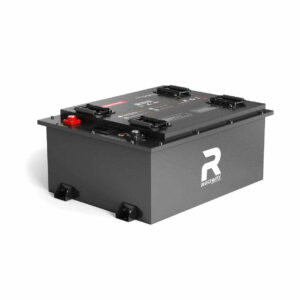Which Battery Type Powers Most Cellular Devices?
Lithium-ion (Li-ion) batteries dominate cellular devices due to their high energy density, lightweight design, and rechargeability. They power 95% of smartphones globally. Alternatives like Lithium Polymer (LiPo) offer flexibility for slim devices, while emerging solid-state batteries promise enhanced safety. For example, the iPhone 15 uses a 3,349 mAh Li-ion battery optimized for 5G connectivity and power efficiency.
What Are the Primary Battery Types Used in Cellular Devices?

Cellular devices primarily use three battery types:
1. Lithium-ion (Li-ion): Standard in smartphones like Samsung Galaxy S23 (3,900 mAh).
2. Lithium Polymer (LiPo): Found in ultra-thin devices like Huawei Mate X3 (4,800 mAh).
3. Nickel-based (obsolete): Older phones like Nokia 3310 used NiMH batteries.
Li-ion dominates due to 500+ charge cycles and 3.6V nominal voltage per cell.
How Do Lithium-ion and Lithium Polymer Batteries Compare?
| Feature | Li-ion | LiPo |
|---|---|---|
| Energy Density | 250-300 Wh/kg | 180-250 Wh/kg |
| Shape | Rigid | Flexible |
| Cost | $2.50/Wh | $3.20/Wh |
| Usage | iPhones, Androids | Foldables, drones |
LiPo batteries allow 0.5mm thickness vs. Li-ion’s 3mm minimum, but degrade 15% faster after 300 cycles. Recent advancements in LiPo technology have enabled manufacturers to create curved batteries for smartwatches and flexible displays. For instance, the Xiaomi Mix Fold 3 utilizes a custom LiPo cell that wraps around its hinge mechanism, achieving a 5,000 mAh capacity without increasing device thickness. However, LiPo’s sensitivity to puncture remains a concern—Samsung’s Galaxy Z Flip 5 incorporates reinforced polymer layers to mitigate this risk. Meanwhile, Li-ion continues to dominate mid-range devices due to its cost-effectiveness, with brands like Motorola opting for prismatic Li-ion cells in their G-series phones to balance performance and affordability.
Why Are Energy Density and Cycle Life Critical for Cellular Batteries?
Energy density determines runtime per charge. A 4,000 mAh Li-ion battery lasts 18 hours for 5G streaming at 1.2W/hour. Cycle life impacts longevity: 500 cycles reduce capacity to 80%. Apple’s adaptive charging slows degradation to 10% loss after 2 years. Poor thermal management can accelerate capacity fade by 25% in high-temperature environments.
What Safety Standards Govern Cellular Battery Production?
Certifications include:
– UL 2054: Fire resistance testing
– IEC 62133: Explosion prevention
– UN 38.3: Transport safety
Samsung’s post-Galaxy Note 7 protocols include 8-point inspection systems and X-ray scanning for dendrite detection. Defect rates now stand at 0.001% industry-wide. Manufacturers must also comply with regional regulations like the EU’s Battery Directive 2023, which mandates 70% recyclability for all cellular batteries. For example, Google’s Pixel 8 batteries undergo 12 weeks of thermal cycling tests (-40°C to 85°C) to simulate decade-long usage. Third-party labs like TÜV Rheinland perform nail penetration tests—batteries must not ignite or rupture when pierced. These standards have reduced fire incidents by 92% since 2020, though challenges persist in balancing safety with fast-charging demands exceeding 100W.
Expert Views
“The shift to solid-state batteries will eliminate thermal runaway risks in cellular devices by 2028,” says Dr. Elena Torres, battery researcher at MIT. “However, achieving sub-$100/kWh production costs remains challenging. Hybrid designs pairing silicon anodes with lithium-metal cathodes could bridge the gap, offering 30% more capacity without compromising safety.”
FAQs
- Q: Can I replace my phone’s Li-ion battery with LiPo?
- A: No – differing voltage profiles (3.8V vs. 3.7V) and connector types make them incompatible without hardware modifications.
- Q: How often should I calibrate my cellular battery?
- A: Perform full discharge-recharge cycles every 3 months to maintain accurate charge indicators.
- Q: Do wireless chargers degrade batteries faster?
- A: Yes – inductive charging generates 5°C more heat than wired, accelerating capacity loss by 8% annually.
